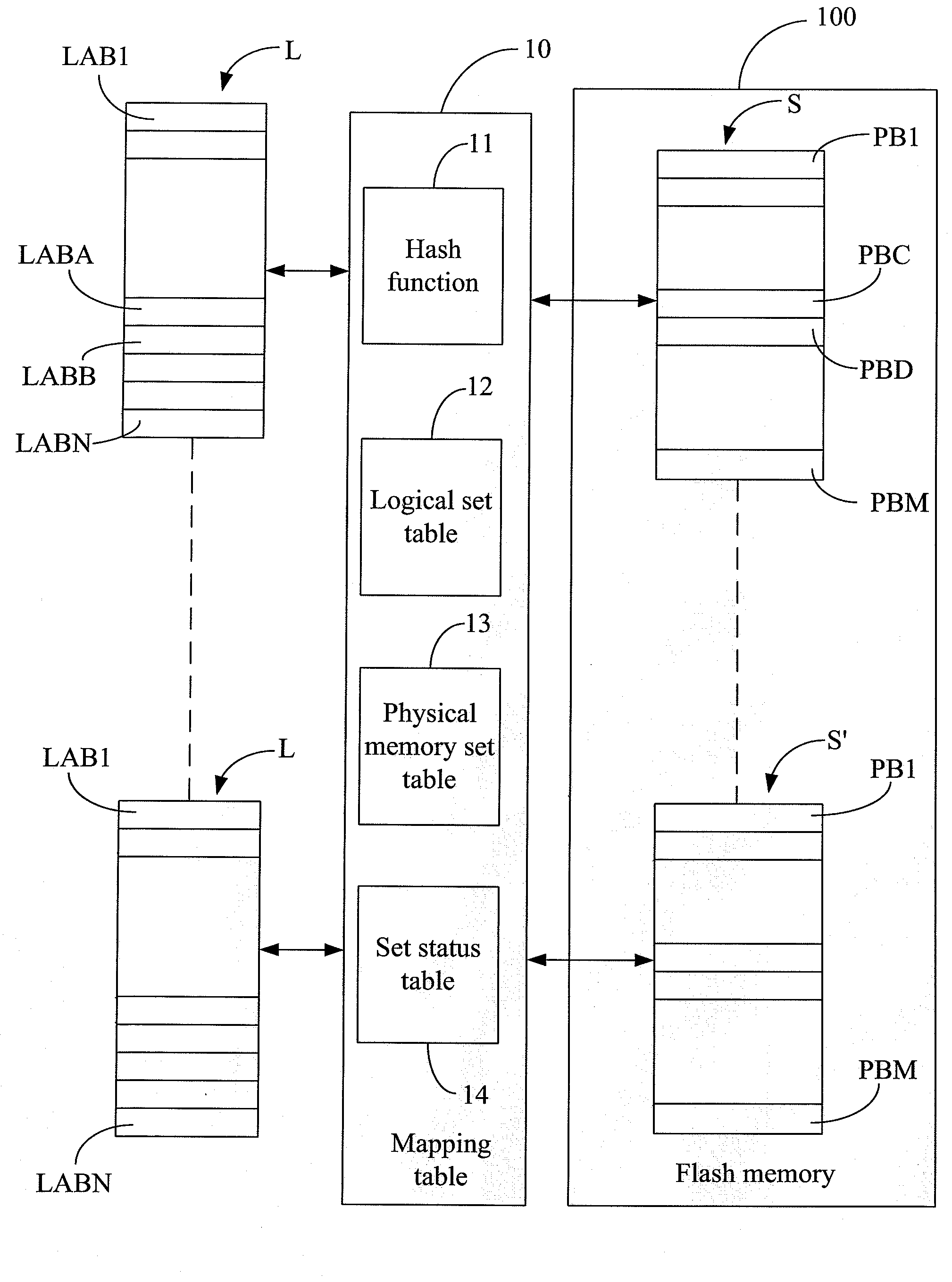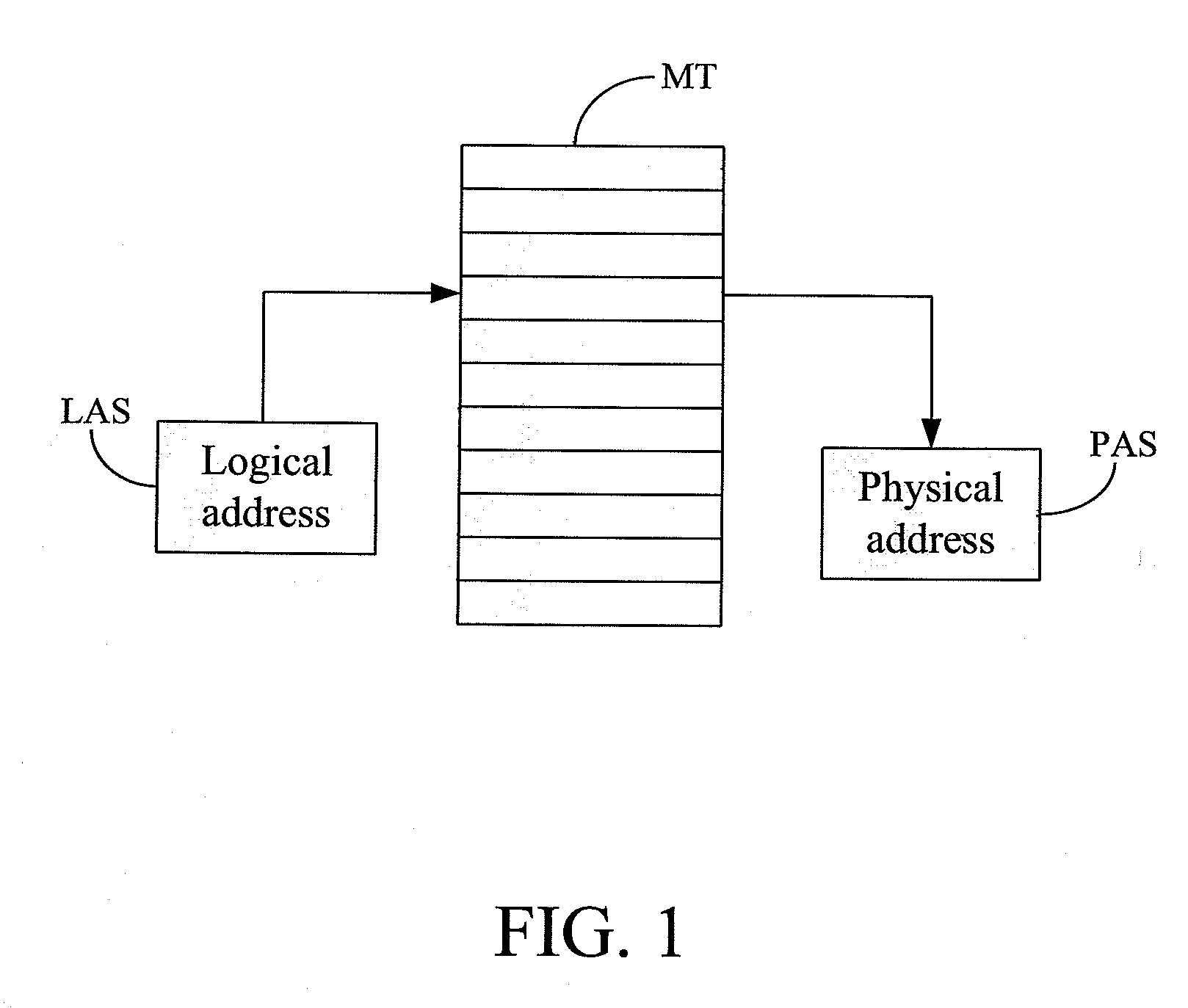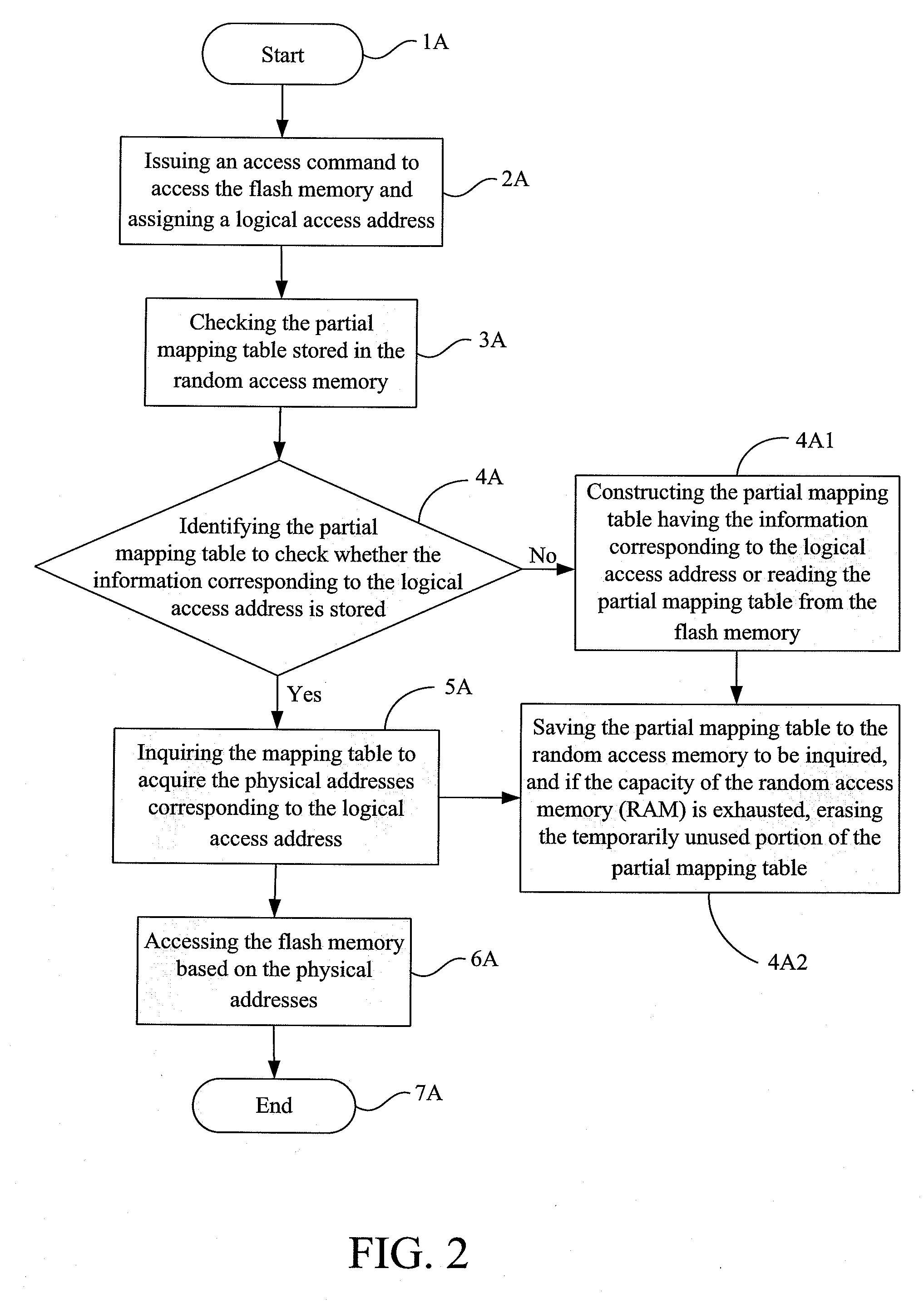Management method for reducing utilization rate of random access memory (RAM) used in flash memory
- Summary
- Abstract
- Description
- Claims
- Application Information
AI Technical Summary
Benefits of technology
Problems solved by technology
Method used
Image
Examples
Embodiment Construction
[0036]Please refer to FIG. 4. FIG. 4 illustrates an architecture definition view of a management method used in flash memory for reducing the utilization rate of random access memory (RAM) according to one embodiment of the present invention. The physical memory set “S” or “S′” includes the amount “m” of physical memory blocks “PB1” to “PBM” in the flash memory 100, and the logical set “L” or “L′” includes the amount “n” of logical blocks “LAB1” to “LABN”. The data in the same logical set are stored in the same physical memory set wherein the amount “n” is smaller than or equal to the amount “m”. The data stored in each of the logical blocks “LAB1” to “LABN” are not necessarily stored in a specific number of physical memory blocks.
[0037]That is, while writing or updating a logical block “LABA”, the logical block address (LBA) corresponds to the physical memory set “S” after inquiring a mapping table 10. The mapping table 10 includes a hash function 11, a logical set table 12, a phys...
PUM
 Login to View More
Login to View More Abstract
Description
Claims
Application Information
 Login to View More
Login to View More - R&D
- Intellectual Property
- Life Sciences
- Materials
- Tech Scout
- Unparalleled Data Quality
- Higher Quality Content
- 60% Fewer Hallucinations
Browse by: Latest US Patents, China's latest patents, Technical Efficacy Thesaurus, Application Domain, Technology Topic, Popular Technical Reports.
© 2025 PatSnap. All rights reserved.Legal|Privacy policy|Modern Slavery Act Transparency Statement|Sitemap|About US| Contact US: help@patsnap.com



